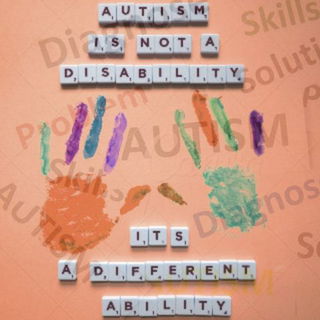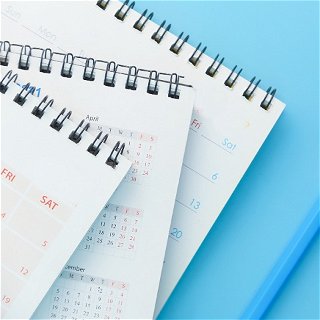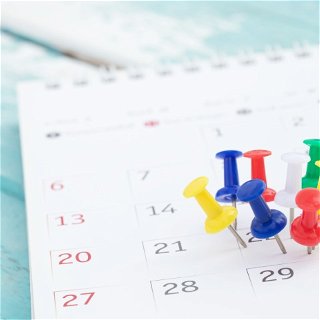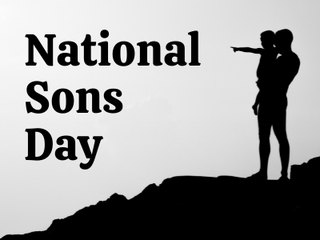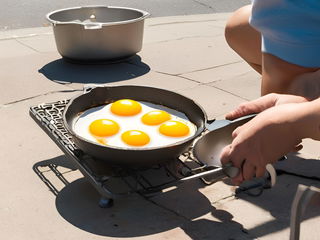The Mayan Calendar is an ancient dating system consisting of three separate calendars. Mesoamerican civilizations, such as the Mayan civilization, used the calendar in Central America. Some modern communities still use it to this day.
Against popular belief, the Mayan calendar was not invented by the Mayans. Rather, the calendar is based on a system that had been in use since the 5th century BC, and the Mayans helped to develop it. Many civilizations such as the Olmec and the Aztecs were already using this system, before the Mayans.
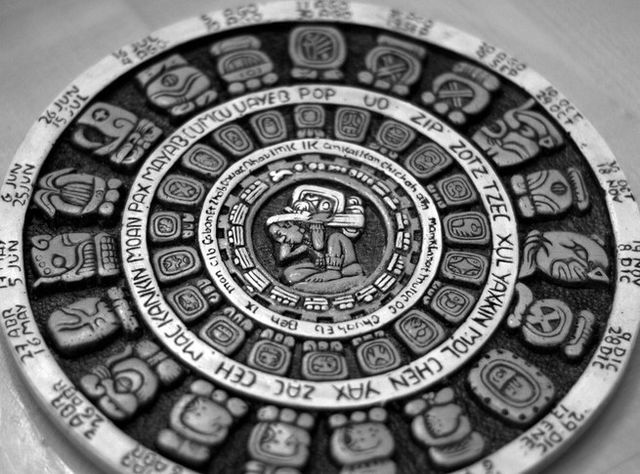
How does the Mayan Calendar work
The Mayan Calendar is based on a system of 260 named days, and a year of 365 days. It is made of three calendars, which are put together to form a "Calendar Round" corresponding to 18,980 days, or 52 years.
How is the date determined in the Mayan Calendar
Dates are determined by their position on the Tzolkin and Haab calendars, and there are 18,980 unique combinations that identify the day in a 52-year cycle. The combinations are specified by the two wheels that make up the Mayan Calendar, which rotate in different directions. The largest wheel represents the Haab and the smallest one corresponds to the Tzolkin.
The Three Mayan Calendars
The Haab, the Tzolkin, and the Long Count are used together to calculate the days and count the time in the Mayan Calendar. They each have different characteristics and are used for separate purposes.
The Haab
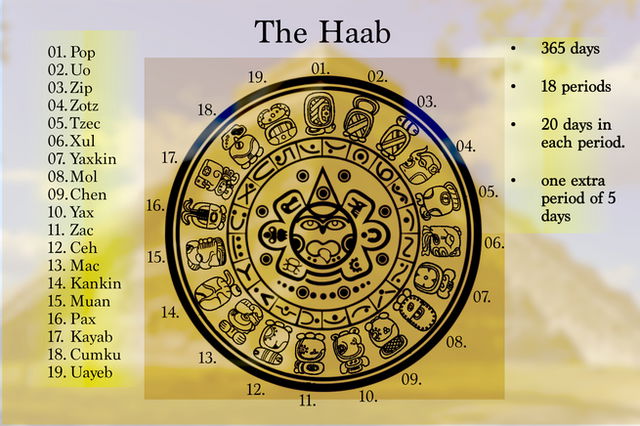
The Haab is the civil calendar used by the Mayan civilization. It is a solar calendar, and it has 365 days.
This calendar is divided into 18 months, which have 20 days each. The extra 5 days at the end of the year make up their own month, called the Uayeb or "nameless days". On these 5 days, Mayan people would not leave their homes, as these were thought to be dangerous times.
The 19 months are represented in the outer ring of the Haab calendar by glyphs, which define a personality that is related to the month. Days are represented by a number, followed by the name of the month.
The Tzolkin
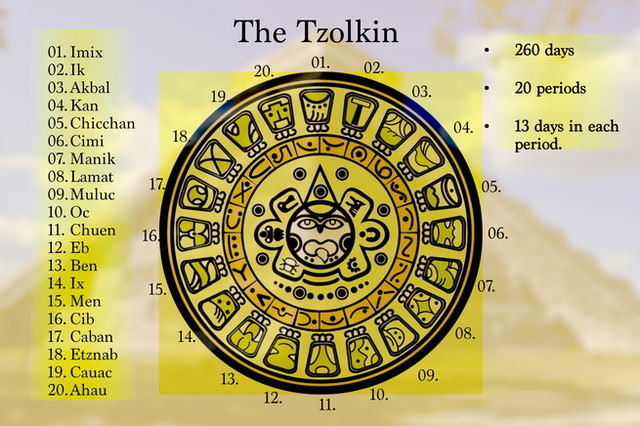
The Tzolkin (which translates to "count of days") is also known as the Divine Calendar. It represents the 260 days in the Maya Sacred Round and is used to determine the dates of religious days, harvests, and ceremonial events, such as weddings.
The 260 days are divided into 20 periods of 13 days each. The days are numbered from 1 to 13, and each period has a different name. These cycles of 13 and 20 repeat until they both get back to the first number and first name, after 260 days.
The Long Count
The Mayans also have an astronomical calendar, used to track longer periods of time, counting all the days since the beginning of the Universe, which the Mayans believed was August 11, 3114 B.C.
This calendar is cyclical, which means it has a beginning and an end, after which it starts again. Each cycle is about 7885 years. It is a Mayan belief that the Universe is destroyed and then regenerated at the start of each cycle of the Long Count.
- Christmas day in the year two thousand and sixteen is probably written like this: 12/25/2016 (or 25/12/2016!) and with the correct mathematical formula you could calculate how many days have passed since the year zero.
- Rather than using separate numbers to refer to years, months, and days, the Mayans used their own counters of days: B'aktun (a period of 144,000 days), K'atun (7,200 days), Tun (360 days), Winal /Uinal (20 days), and K'in (1 day).B’aktun (a period of 144,000 days), K’atun (7,200 days), Tun (360 days), Winal/Uinal (20 days), and K’in (1 day).
- Using the Mayan Long Count the date 12/25/2016 would look like this: 13.0.4.1.5 (13 B'aktun, 0 K'atun, 4 Tun, 1 Winal, 5 K'in)B’aktun, 0 K’atun, 4 Tun, 1 Winal, 5 K’in)
- We could accurately multiply and add the days of these B'aktun, K'atun, Tun, Winal and K'in (1,873,465 days) and work back from 12/25/2016 to get to the date August 11, 3114 BC, the Mayan equivalent to year 0.
Click here for more information on the history of BC and AD
When the world did not end
The previous Long Count cycle ended on December 21, 2012, leading many people to believe that the world would end that day. Despite experts in history and Mayan culture reiterating that the change in the cycle did not come with any prophecies of armageddons, newspaper headlines all over the world were captivated by the idea that Mayan prophecies indicated that the end of the world was nigh.
- The Express: "World ending? Celebrate in style... This could be one of the last things you ever read if the ancient Mayan prediction that the world will come to an abrupt end turns out to be true."
- The Guardian: "Mayan apocalypse looms large in the week ahead... Bad enough that the Christmas shopping is still not done, some people are preparing for the end of the world on 21 December"
Some prophecies were made that the only surviving village would be a small place in France known as Bugarach. So for several days, this village was famous, and visited by thousands of people, including media and journalists from across the world.
Whilst most people did not believe the doomsayers and felt confident that life would continue, some surveys showed that as many as one people in ten felt a sense of anxiety when thinking about the date.
The mass hysteria and media attention later became known as the 2012 phenomenon.
Where is the Mayan Calendar still used today
The Mayan civilization still has large populations that follow ancient traditions, customs, and beliefs. These populations are spread across Central America, in El Salvador, Guatemala, Honduras, Belize, and some parts of Mexico. Using the Mayan calendar is one of those customs that is followed by some people, but due to modernization, it is used for traditional rituals, rather than accurate time telling.



